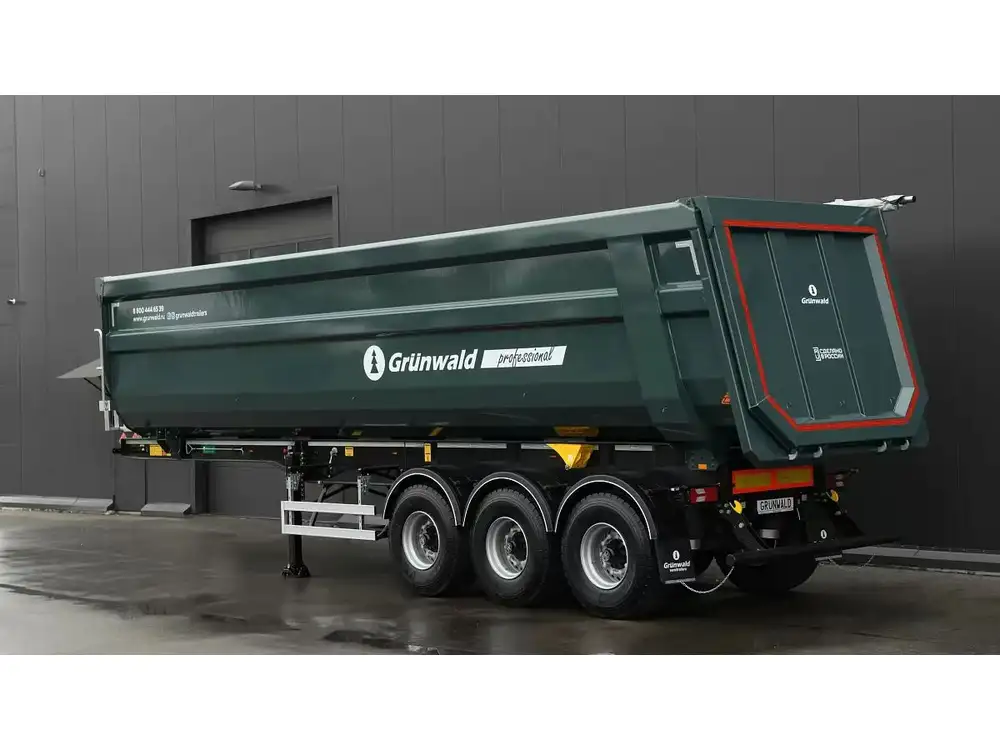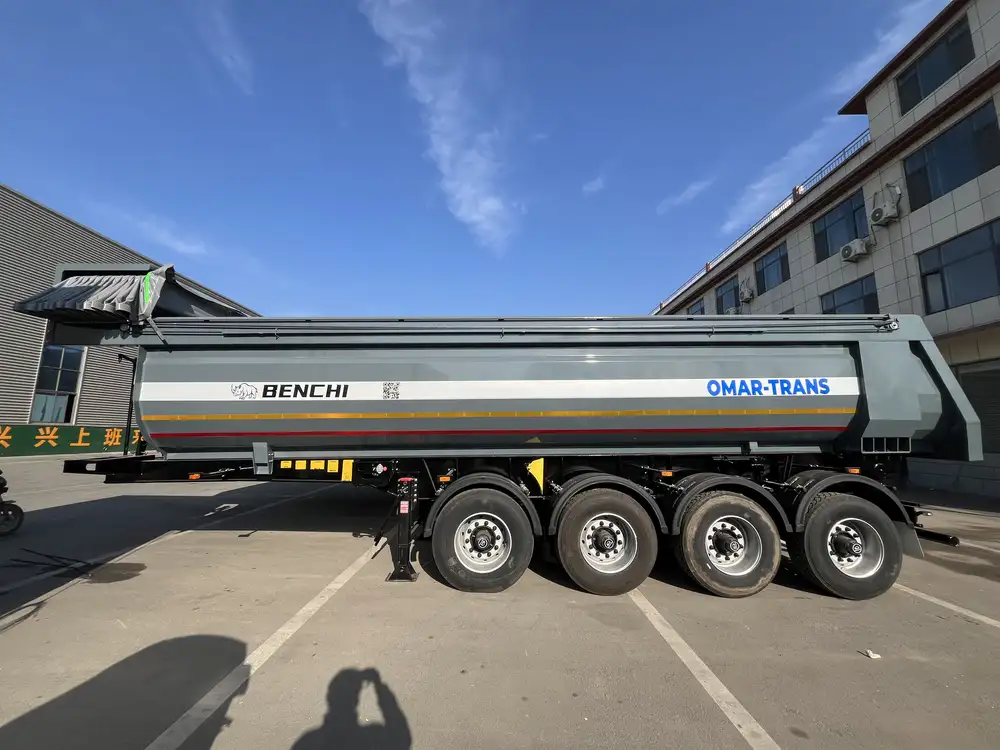When the question arises, “Can I load my tractor on a dump trailer?”, it’s essential to dive into the complexities surrounding this topic. Loading heavy machinery, like tractors, onto dump trailers is a task that requires careful consideration of a multitude of factors, including weight limits, equipment stability, and overall safety. This article provides a detailed overview to address all aspects surrounding this query, empowering you to make informed decisions.
Understanding Dump Trailers: Types and Capacities
Before delving deeper, let’s map out the types of dump trailers available and their standard capacities.
Different Types of Dump Trailers
| Type of Dump Trailer | Description | Typical Weight Capacity |
|---|---|---|
| Standard Dump Trailers | Commonly used for construction and heavy material transportation. | 10,000 – 20,000 lbs |
| Gooseneck Dump Trailers | Known for their stability and ability to carry heavier loads; ideal for tractors. | 15,000 – 30,000 lbs |
| Tilt Trailers | Feature a tilting platform; often easier for loading smaller tractors. | 7,000 – 14,000 lbs |
| Lowboy Trailers | Designed for transporting large equipment; ideal for oversized tractors. | 25,000 – 60,000 lbs |

Weight Considerations: Assessing Your Tractor and Trailers
The weight of both the tractor and the dump trailer is paramount. It’s crucial to know the full weight of your tractor to avoid overloading the trailer, which can lead to structural damage or accidents.
Measuring Your Tractor’s Weight
To assess whether you can safely load your tractor onto a dump trailer, start by looking into the manufacturer’s specifications.
- Manufacturer Specifications: Find the weight details in the user manual or the manufacturer’s website.
- Weigh Station: For the most accurate measurement, consider weighing your tractor at a local weigh station.
Dump Trailer Weight Limits
Each dump trailer has a specific weight capacity. Exceeding this limit could compromise both the trailer and your safety. Always check the trailer’s identification plate for the Gross Vehicle Weight Rating (GVWR).

Loading Techniques: Safe Practices for Loading a Tractor
Loading a tractor onto a dump trailer should be approached with the utmost caution. Here are guidelines to ensure a secure loading process:
Steps to Load Your Tractor
Preparation:
- Ensure the trailer is on a level surface.
- Ensure that all ramps are properly secured before and after use.
Use of Ramps:
- If using a standard ramp, ensure it can handle the tractor’s weight. Gooseneck trailers often have built-in ramps that distribute weight effectively.
Driver’s Position:
- Sit comfortably in the tractor, ensuring the wheels are straight.
- Gradually drive the tractor onto the trailer, utilizing low speeds to maintain control.
Weight Distribution:
- Ensure the tractor is positioned centrally on the trailer to distribute weight evenly.
- If the trailer has sidewalls, keep the tractor’s tires within them to avoid roll-off.
Securing the Load:
- Use chains or straps to secure the tractor firmly. Ensure that they are tight but not overly constricted, which could damage the equipment.
Safety Precautions
- Check Equipment: Inspect all loading equipment, including ramps and straps, for wear or defects.
- Use Spotters: If possible, have someone assist you during the loading process for added safety.
- Appropriate Gear: Wear safety equipment, including hard hats and steel-toed boots, to prevent injury.

Troubleshooting: Common Loading Issues
Despite thorough preparations, loading a tractor onto a dump trailer can sometimes present challenges. Here are common issues and how to address them:
| Problem | Solution |
|---|---|
| Trailer Tilt | Adjust the hitch height or reposition the trailer for better stability. |
| Slipping Ramp | Secure ramps with chains to the trailer to prevent slipping during loading. |
| Weight Imbalance | If the trailer lists to one side, reposition the tractor for even weight distribution. |
| Uneven Surface | Load on a leveled area; consider using leveling blocks if the surface isn’t even. |
Legal and Safety Regulations: Explore Compliance in Your Area
Loading heavy equipment like tractors onto trailers often comes with regulatory requirements that vary by location. Familiarize yourself with the following:
Local Regulations and Permits
- Weight Regulations: Most jurisdictions have specific regulations regarding the maximum load limits on trailers. Ensure you are compliant to avoid fines.
- Permit Requirements: For oversized loads, particularly those exceeding standard weight limits, it may be necessary to obtain special permits.

Safety Guidelines
- Contact Local Authorities: Always consult local transport authorities for up-to-date regulations regarding equipment transport.
- Insurance: Verify that your trailer and tractor are adequately insured for transport-related incidents.
Frequently Asked Questions (FAQs)
1. Can I Load Multiple Tractors on One Dump Trailer?
Loading multiple tractors is feasible if weight limits are not exceeded and proper weight distribution is maintained. Ensure that both tractors are properly secured.

2. Is it Better to Load from the Side or Back of the Trailer?
Generally, loading from the rear provides a direct approach, minimizing the risk of slipping. However, some trailers are designed for side-loading. Check your trailer design before loading.
3. Can a Dump Trailer Handle a Compact Tractor?
Yes, most standard dump trailers can accommodate compact tractors. However, always ensure that their weight does not exceed the trailer’s capacity.
4. What are the Consequences of Overloading?
Overloading a trailer can cause significant damage, including structural failure of the trailer, swaying during transport, and reduced stopping ability, significantly increasing the risk of accidents.

Conclusion
To answer the question, “Can I load my tractor on a dump trailer?”, the answer is generally yes, provided you adhere to safety practices and weight regulations. By understanding your equipment, utilizing safe loading techniques, and complying with local regulations, you can transport your tractor efficiently and effectively.
Always prioritize safety and diligence to protect both your equipment and those involved in the loading process. When in doubt, consult with professionals or equipment manufacturers for the best practices tailored to your specific needs. Adopting a thorough approach not only safeguards your investment but also enhances operational efficiency on job sites.



